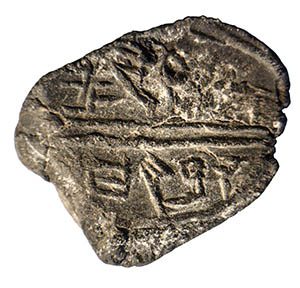The Interrupted Search for King David’s Palace
Northern Tower sheds light on King David’s palace administration
Biblical Archaeology Society Staff | February 03, 2019
 Eilat Mazar
Eilat MazarIn 2007, prominent Israeli archaeologist Eilat Mazar was excavating a monumental public building in Jerusalem’s City of David – a structure she believes might be King David’s palace – when one of the ancient stone towers at the site became in danger of collapsing. Believing it necessary to excavate the tower as soon as possible, Mazar halted work on the monumental building to focus attention on the tower. As detailed in “The Interrupted Search for King David’s Palace” by Hershel Shanks in the July/August 2016 issue of Biblical Archaeology Review, what Mazar discovered at the tower was well worth the effort.
Mazar, who is affiliated with the Hebrew University in Jerusalem, began excavations in 2005 in the northern end of the City of David, a 12-acre spur that extends south of the Temple Mount. She had set her sights on this area after examining the results of the excavations British archaeologist Kathleen Kenyon conducted there in the 1960s. Of particular interest to Mazar was a massive Iron Age public structure Kenyon uncovered and had believed was part of a new casemate wall built by King Solomon in the 10th century B.C.E.
“Perhaps this casemate wall … was part of David’s palace,” Mazar wrote in her groundbreaking article “Did I Find King David’s Palace?” in the January/February 2006 issue of BAR.
 Inscribed clay bullae recovered from the excavation of the Northern Tower – such as this one bearing the name hym‘z – reflect a complex bureaucracy in the capital of Judah, according to excavator Eilat Mazar. Photo: Courtesy Eilat Mazar.
Inscribed clay bullae recovered from the excavation of the Northern Tower – such as this one bearing the name hym‘z – reflect a complex bureaucracy in the capital of Judah, according to excavator Eilat Mazar. Photo: Courtesy Eilat Mazar.Mazar’s excavations revealed the structure – which she called the Large Stone Structure – to be an enormous building comprised of giant walls between 6 and 8 feet wide that was once decorated with elegant proto-Aeolic capitals. The building seemed to have been supported by the so-called Stepped Stone Structure, a massive stone edifice of walls and terraces covering the northeastern slope of the City of David.
Mazar’s investigation of the Large Stone Structure was interrupted in 2007 when one of the two stone towers that flanked the top of the Stepped Stone Structure was “in danger of imminent collapse.” She thus shifted excavation work to this vulnerable tower, called the Northern Tower.
Soil from the excavation of the Northern Tower was wet-sifted by the Temple Mount Sifting Project. Wet-sifting is a technique refined by the project in which excavation dirt is initially dry-sifted over a sieve, and then water is hosed over the contents to remove the dirt and more clearly detect artifacts. The finds recovered from the Northern Tower proved to be worth the effort, for they are shedding light on the administrative personnel of the monumental Iron Age building in the City of David – what may be King David’s palace.
The prize find from the Northern Tower excavations is a cache of more than 100 clay bullae – lumps of clay used to seal administrative and financial documents in antiquity. Mazar believed that these bullae fell down the slope from the Large Stone Structure – which she believes is King David’s palace. One bulla bears a name (hym‘z) that occurs three times in the Bible (1 Samuel 14:50; 2 Samuel 15:27–36; 1 Kings 4:15), but has never before been found archaeologically until now. A seal that was used to stamp another bulla belonged to a woman. The bullae, according to Mazar, suggest that “there was a large archive in the palace” and that the capital of Judah was managed by a sophisticated governmental bureaucracy.
The original version of this article appears here with all the links, photos and footnotes.